Autumn is ideal for pulling weeds! Weed seedlings have small roots and easily come out of the ground. When you catch them young, you’ll remove them before they sprout flowers and seeds. Weedy species are often prolific self-sowers, and getting them before they reseed is crucial to managing their populations.
There’s also not a lot going on in the garden! Use this valuable free time to get a head start on the weeds. Some might be edible for fresh salads throughout the cold months, while others are best for the compost pile. Recycling weeds is key to trapping beneficial nutrients in your garden—you create a closed-loop garden!
No matter what you do with your weeds, these are excellent ways to get rid of them. We’ll discover the best tools to use, how to remove weeds, and preventative measures you can take to rid yourself of future weeding tasks. Without further ado, here are five fall weeding tips to try this season.
Hairy Vetch
Hairy Vetch Cover Crop Seeds
Fava Bean
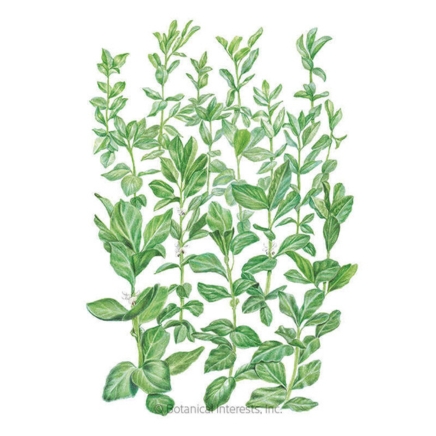
Fava Bean Cover Crop Seeds
Lacy Phacelia
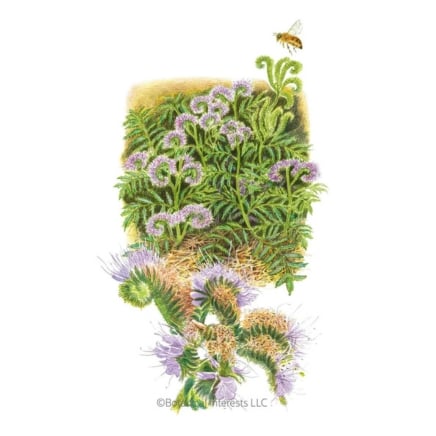
Lacy Phacelia Cover Crop Seeds
Pick Weeds Before They Seed
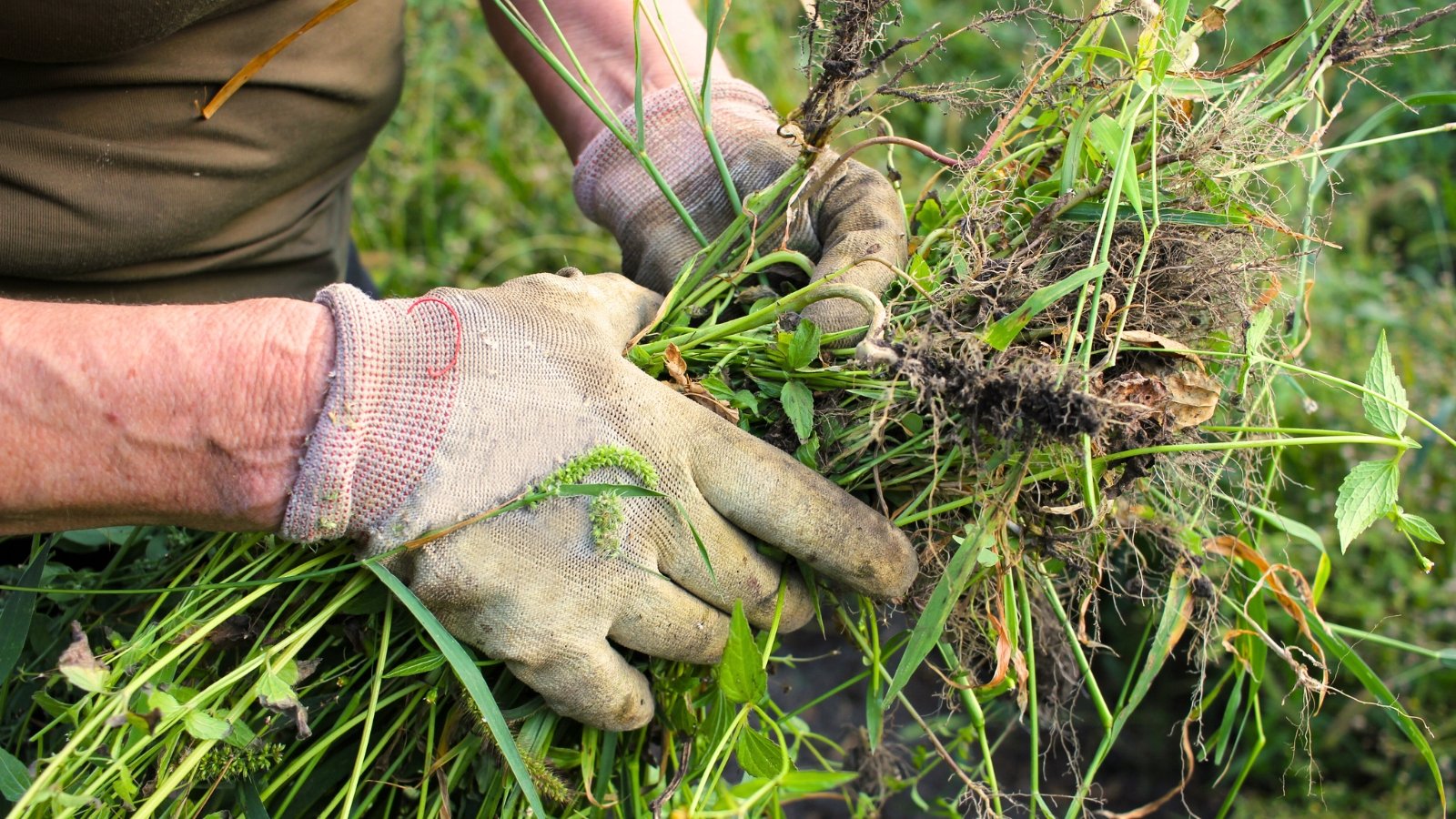
Weeds are plants that sprout where we don’t want them to. They’re sometimes non-native species that naturalize themselves outside of their original habitat. You don’t have to feel bad about removing these because they compete with native plants and garden species, preventing these desirable specimens from thriving.
When you remove them before they sprout seeds, you effectively prevent their future spread. One weed can sometimes create hundreds of seeds, meaning it’ll only take one volunteer seedling to set you back weeks with maintenance. Catch them early, and you save your future self from back-breaking work!
Most weeds produce seeds during warm weather, however, some species like hairy bittercress and chickweed produce seed in cool weather too. Use your hands to uproot them from the moist soil. Throw them in your compost or on top of the soil as green mulch. Avoid putting aggressive weeds back on the soil after pulling them, and let them dry or rot first to ensure they don’t sprout roots again.
Common Cool Season Weeds
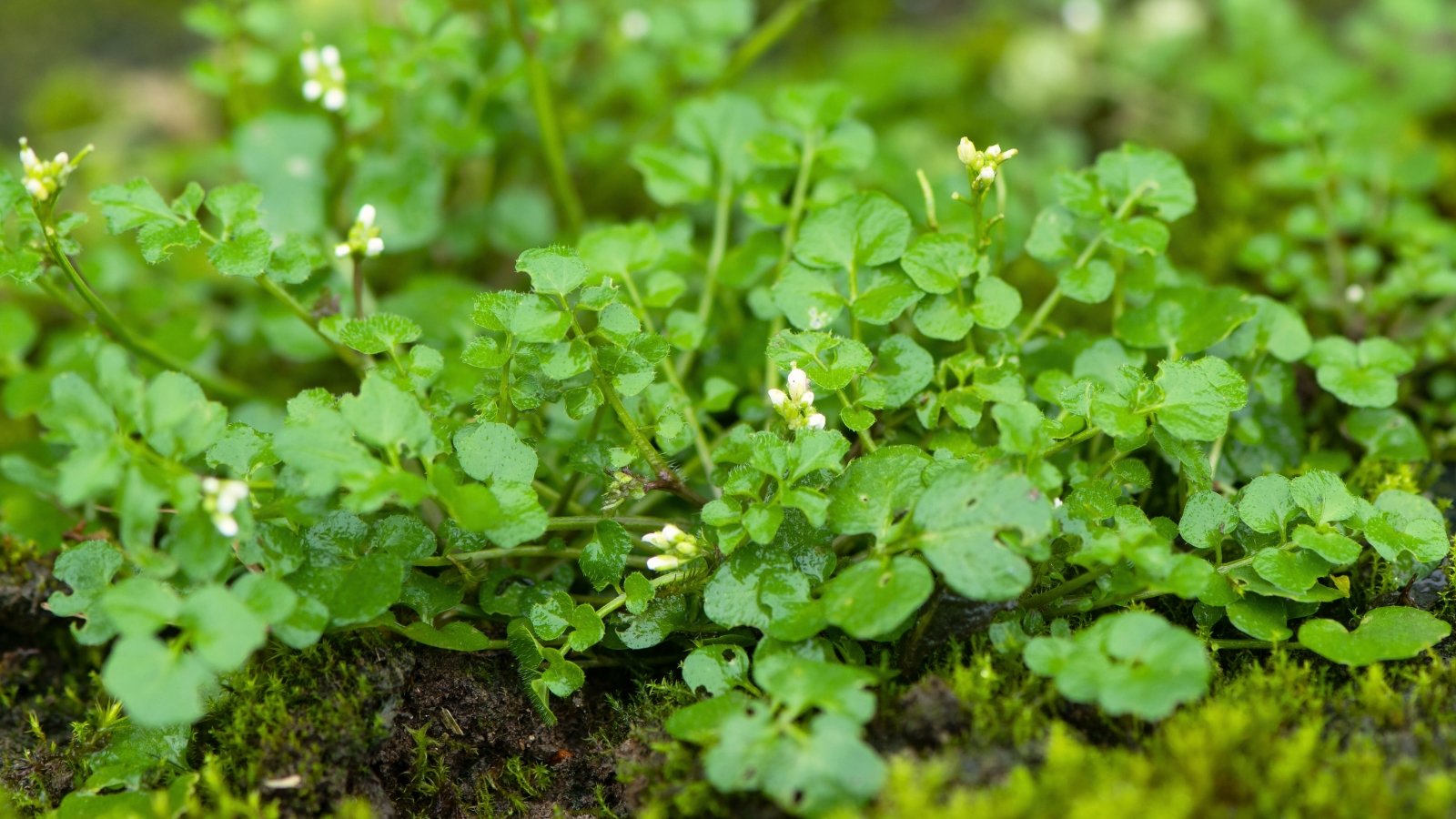
Watch out for these prolific self-spreaders who love cool temperatures. They thrive in fall with increased moisture, occasional frost, and lower competition from hot weather-loving species:
| Common Name | Scientific Name |
| Hairy Bittercress | Cardamine hirsuta |
| Chickweed | Stellaria media |
| Henbit | Lamium amplexicaule |
| Purple Dead Nettle | Lamium purpureum |
| Persian Speedwell | Veronica persica |
| Prickly Lettuce | Lactuca serriola |
| Annual Bluegrass | Poa annua |
Some weeds, especially tough perennial ones, are difficult to pull out of the soil with your bare hands. Metal tools allow you to penetrate the ground and pull these pesky plants out. They help you avoid disturbing the site by efficiently and effectively targeting weedy roots where they’re weak.
Garden Hoe
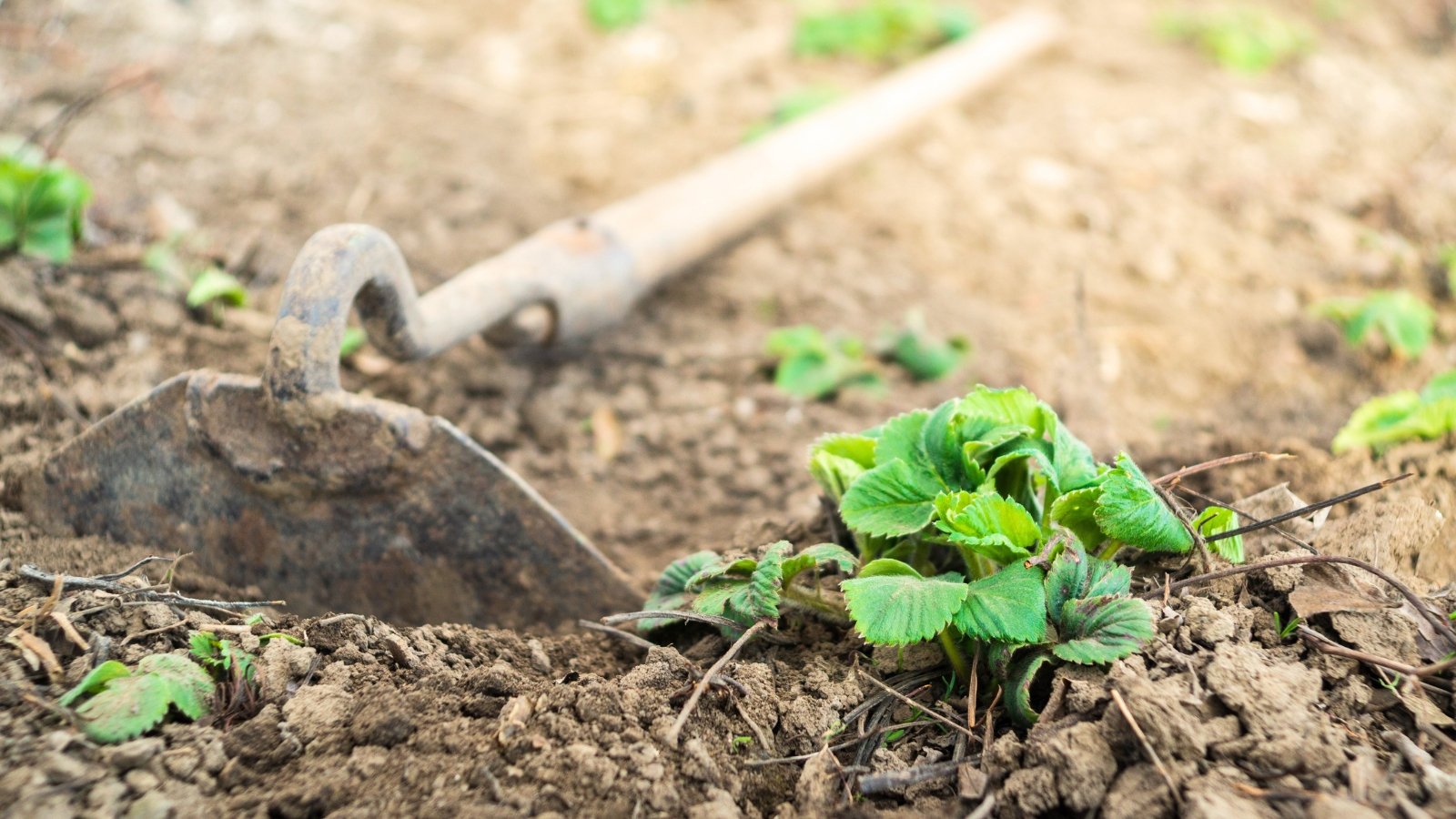
A classic tool as old as gardening itself, the garden hoe is essential for frequent weeding. It has a flat metal head on a long wooden stick, allowing you to yank weeds out while standing up. Save your back and try using a garden hoe!
Use this tool by pressing a corner of the square metal plate underneath the weed, then pull it up and out. This action should yank the plant with all of its roots still attached. It works especially well on perennial weeds with taproots like dandelions and hairy cat’s ears.
CobraHead Weeder
CobraHead Original Weeder & Cultivator
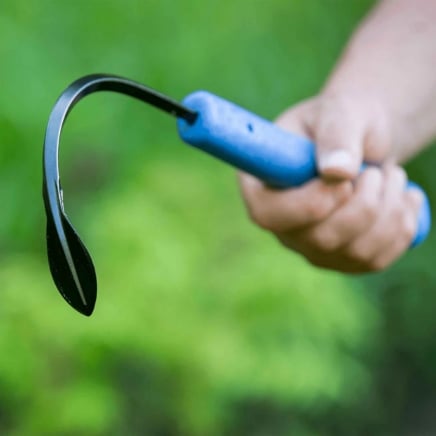
- Multi-use tool: weeds, digs, plants
- Precision blade cuts through tough soil
- Ergonomic handle for comfortable use
- Durable steel fingernail® blade design
- Ideal for various gardening tasks
This tool combines two useful functions into one. Use the CobraHead weeder and cultivator to pull weeds, then use it to plant new ornamentals or vegetables in their stead. It features a curved metal hook with a barb to dislodge tough plants from their homes.
After removing weeds, use this tool to break up the soil so it’s loose and crumbly. The steelhead penetrates clay, sand, and silt to create small particles for easy root growth. Plant perennials or cool season annuals wherever the weeds were growing to prevent them from coming back.
Hori Hori Garden Knife
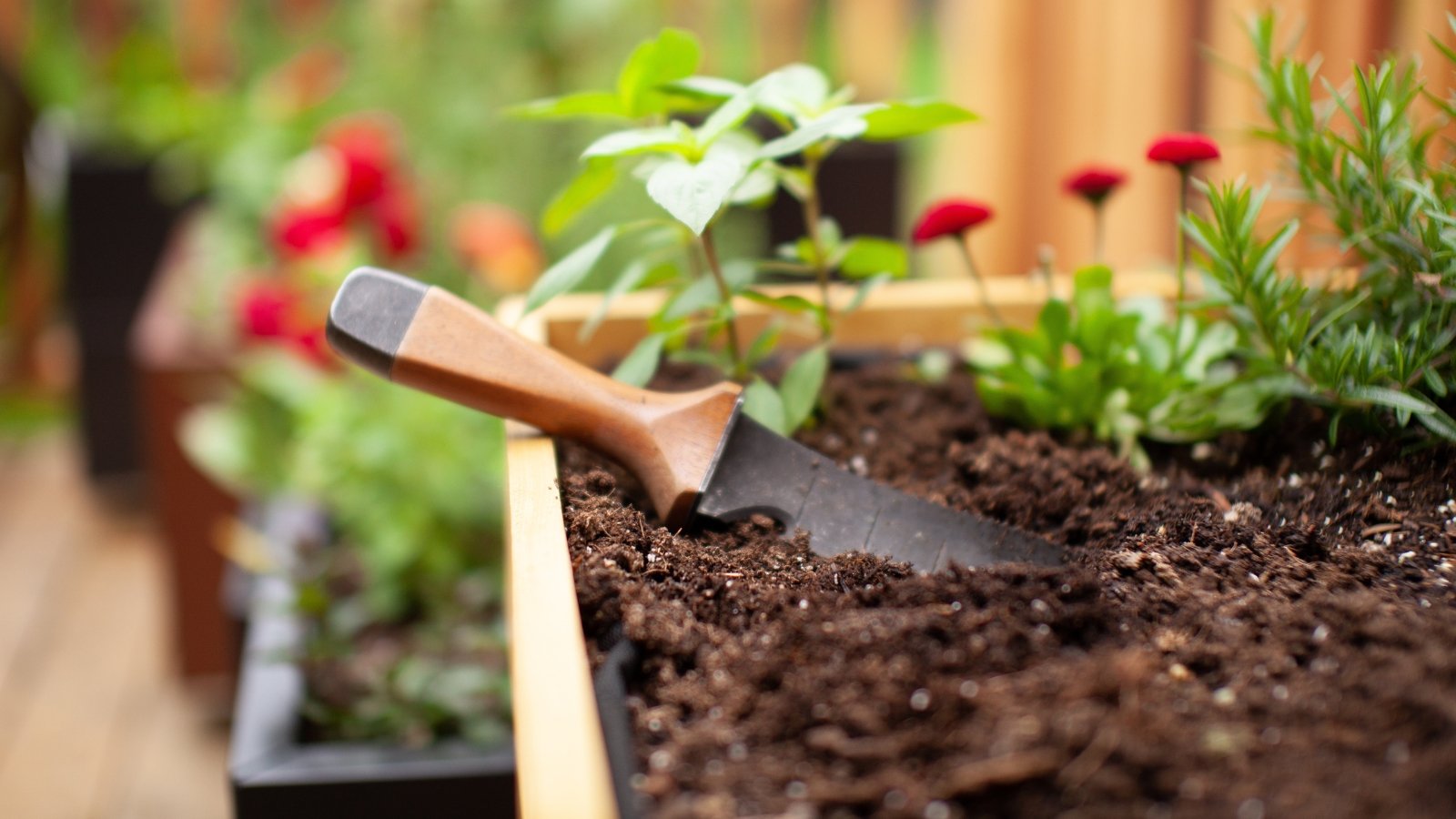
Another multipurpose tool, a Hori Hori knife combines the benefits of a hand trowel with those of a garden knife. It features a sharp, metal blade thick enough to resist clay soil. It’s perfect for hand-weeding perennials with taproots, as it uproots them from deep below the ground.
Hori Hori knives are also perfect for scraping ground-dwelling invasive plants with rooting stems. Scrape them away with the sharp side of the knife, and let them die before adding them to compost or mulch. In a pinch, this tool works well as a blade for cutting fleshy plants, although pruners are best for cutting woody and fleshy plants.
Hand Rake
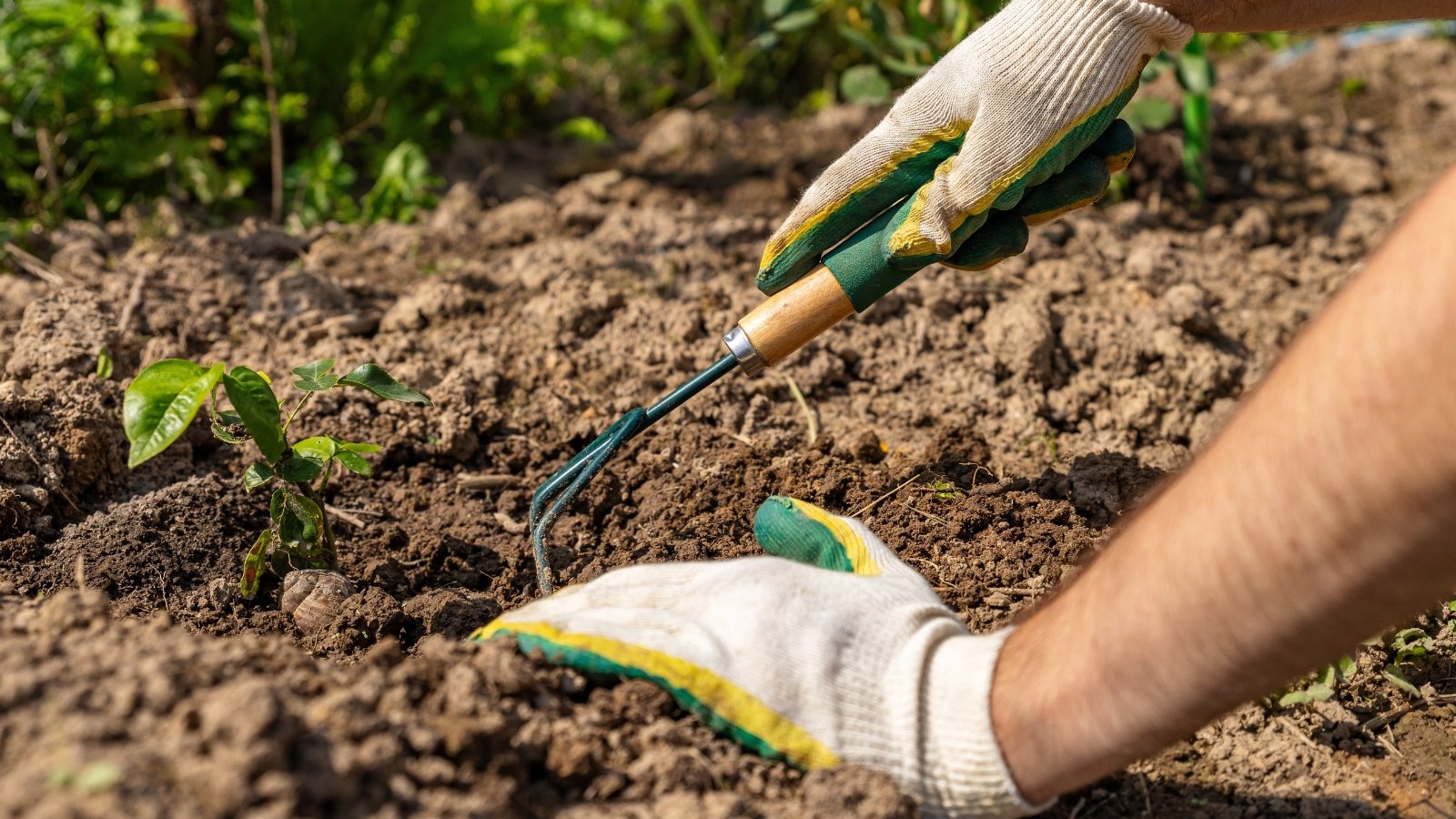
A hand rake is like the CobraHead weeder, except it has three small prongs. Think of it as a handheld rake for loosening large patches of weedy species. Use it to remove weak-rooted weedy plants, to loosen the top layer of soil, or to create furrows for planting seeds.
Eat Edible Weeds
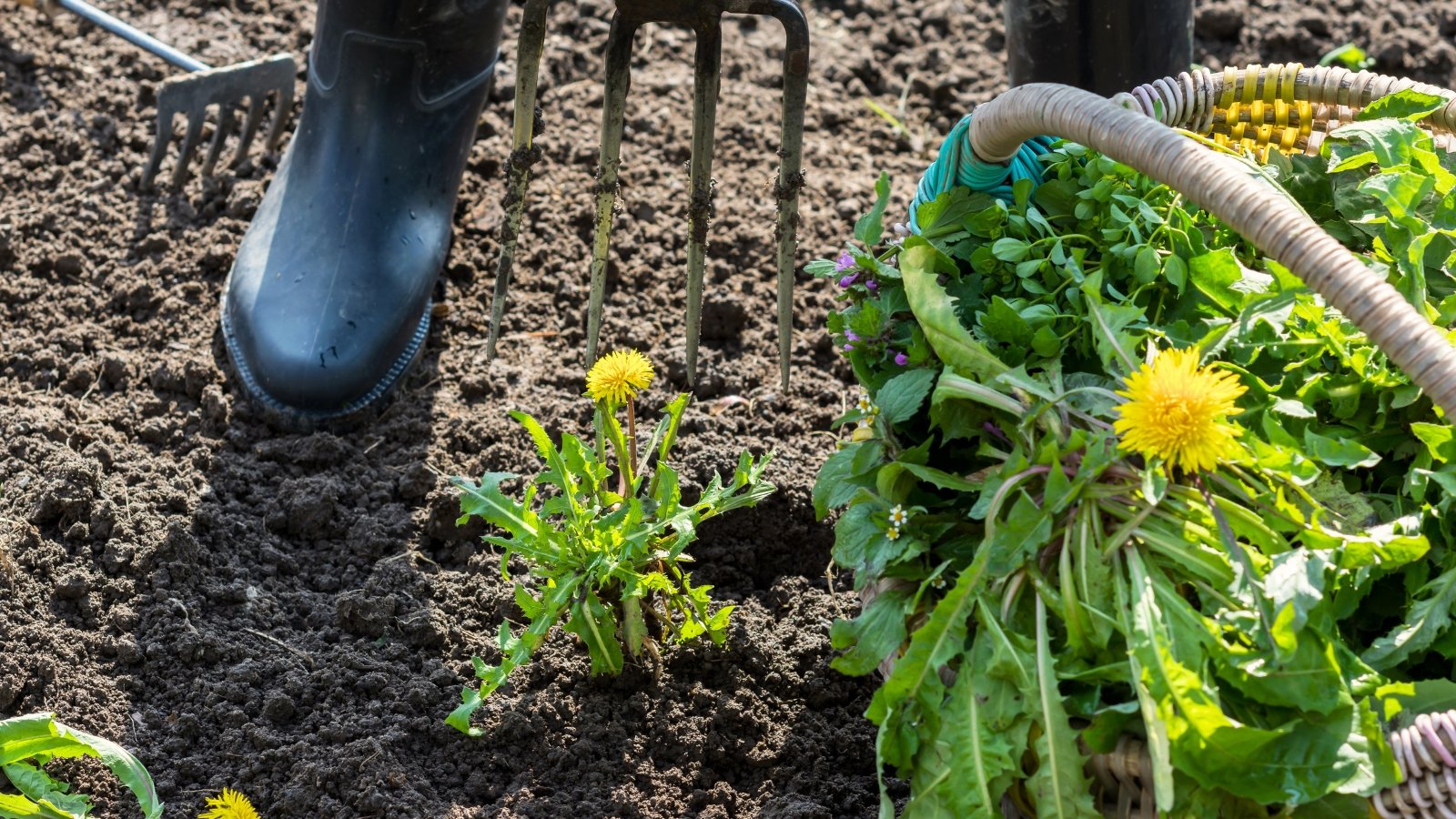
Did you know some weeds are edible? Eat your weedy plants to make good use of them! You’ll save money on leafy greens, and you’ll help clear your yard of pesky plant species. Before eating any wild plant first be sure you properly identify it. Some plants have toxic look-alikes that can hurt you upon ingestion. Always forage with caution, and ask for help from an expert if you’re unsure.
These volunteer seedlings grow throughout North America in abandoned spaces, roadsides, and disturbed land. They’ll surely pop up in your garden where you can harvest them. Avoid pulling wild plants, as this can leave space for more weeds to invade the environment. It’s also hard to tell if wild plants have toxic pesticides or herbicides on them, whereas you know they’re safe to eat in your home garden.
Here are some common edible plants that pop up in fall and winter:
| Common Name | Scientific Name |
| Hairy Bittercress | Cardamine hirsuta |
| Chickweed | Stellaria media |
| Dandelion | Taraxacum officinale |
| Wild Mustard | Brassica spp., Lepidium spp., Sinapis spp., and many more! |
| Plantain | Plantago major |
| Sweet Violet | Viola odorata |
| Mallow | Malva neglecta |
Cover the Soil
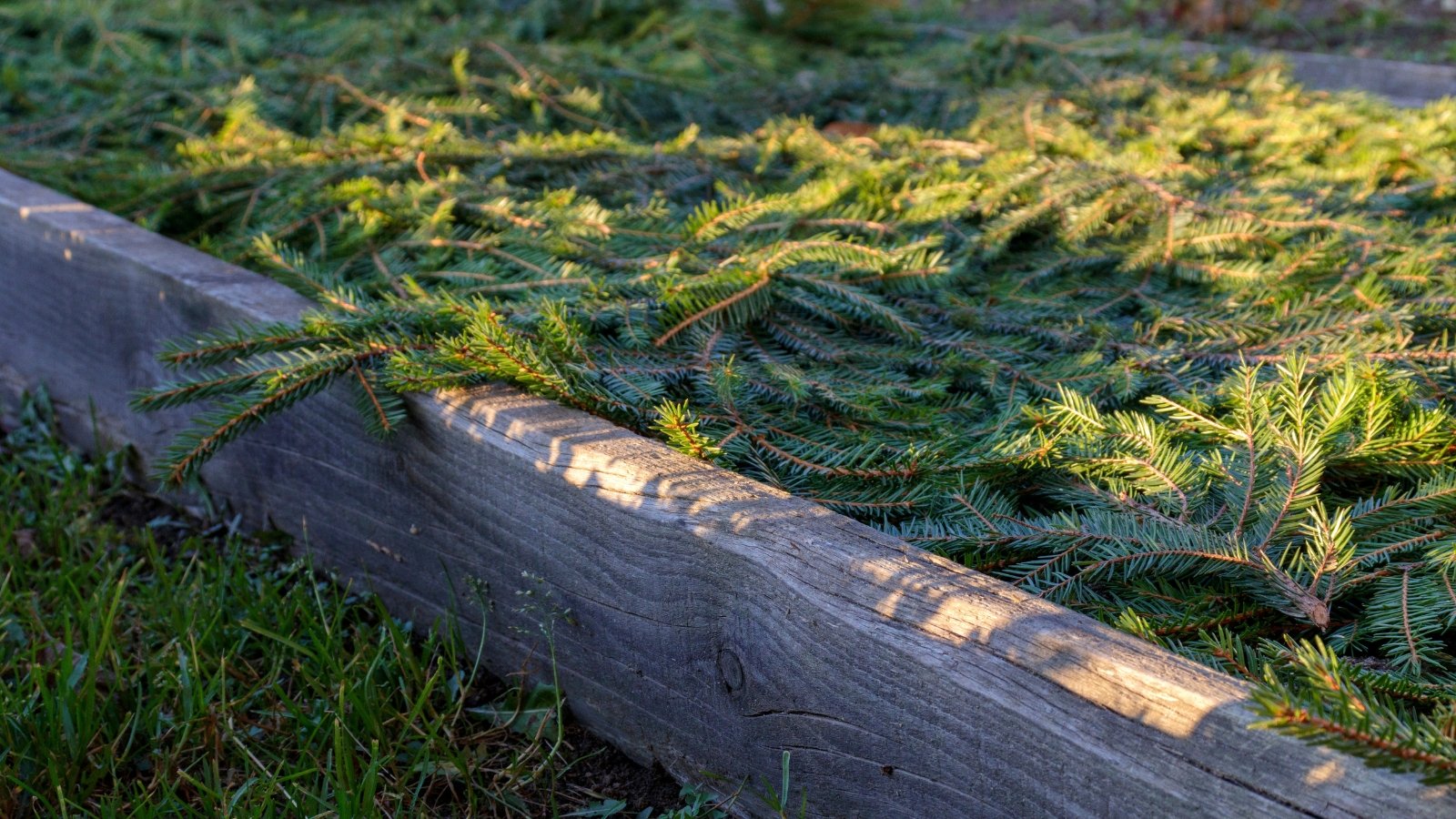
Once you remove all the weedy species from your yard, you’ll want them to stay away! The best way to prevent them from sprouting is to cover the soil. The top layer prevents new seeds from reaching bare soil, and it’ll smother old ones trying to sprout below the cover.
Use any of the following to cover bare soil, or try using organic materials common in your garden. I have lots of pine needles in my backyard and use them to mulch acidic soil-loving plants. Fall leaves, wood chips, and garden debris work well, especially if they’re abundant for you. Avoid using diseased materials.
Mulch
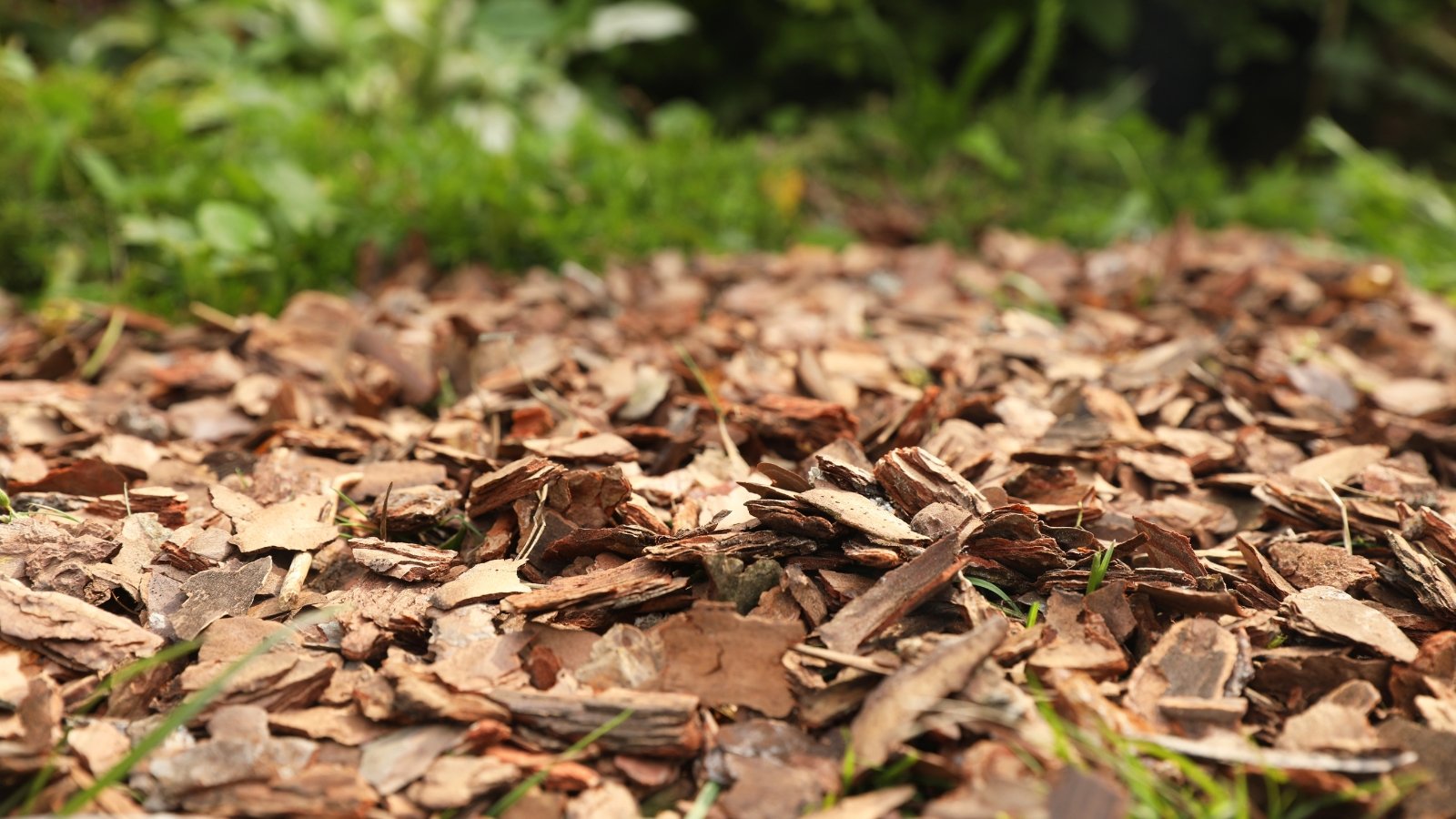
Mulch includes things like compost, leaf mold, and wood chips. It’s a word for the protective covering that sits atop the ground. In forests and natural spaces, this cover comes naturally as leaves drop, twigs break down, and trees fall over. Beneficial fungi, bacteria, and archaea invade the mulch to break it into nutritious, loose, crumbly humus.
Humus is a valuable byproduct of decomposition—it’s what’s left over when microorganisms are through with their decaying processes. It’ll help your other plants stay strong and resilient, making them more resistant to weeds encroaching on their space.
Add mulch anywhere you have bare soil, and apply it in the garden during fall each year. The steady supply smothers weed seedlings before they sprout, and it boosts the biodiversity of your soil. It’s a win-win scenario!
Tarps
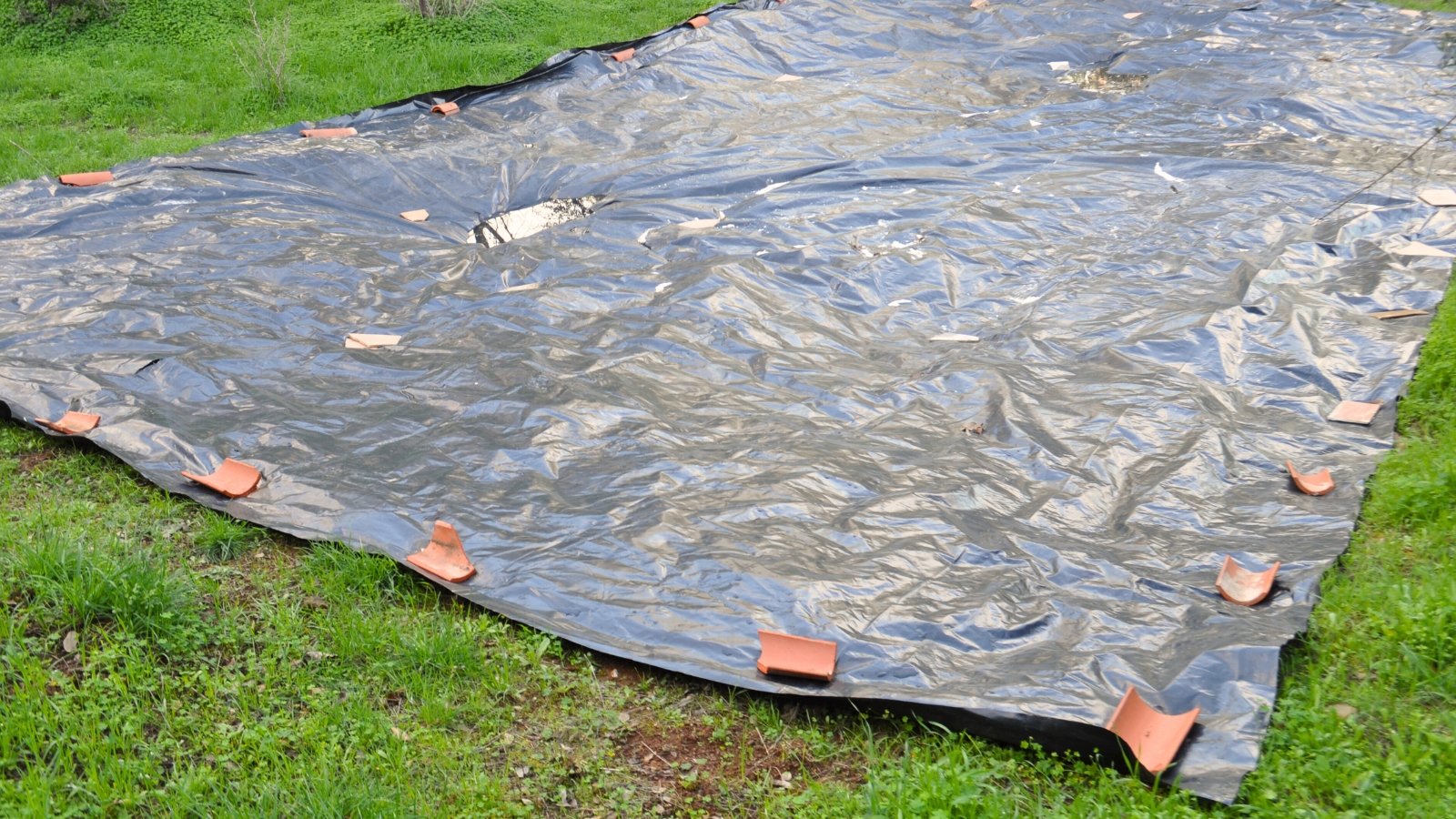
Tarps consist of inorganic substances like plastic or synthetic fabric. Farmers and homesteaders often use them to protect the soil in the off-season, and they take them off during the growing season. This insulates the soil, prevents weedy species from sprouting, and protects microorganisms.
Tarps have many uses, but they’re not ideal for long-term planning. They’re best for a season of use, as they quickly decline and fall apart when left in the environment. Harsh sunlight causes plastics to break up on top of the ground, and strong plant roots fracture the materials if they persist underneath the soil.
Tarps are especially beneficial for smothering aggressive spreading weeds like lesser buttercups, invasive geraniums, and oxalis. They’ll prevent new sprouts from accessing sunlight and water, starving them of essential nutrients so they wither within the year. Lesser buttercup is a particularly pesky species—it may need many years of repeated tarping to remove it fully.
Cover Crops
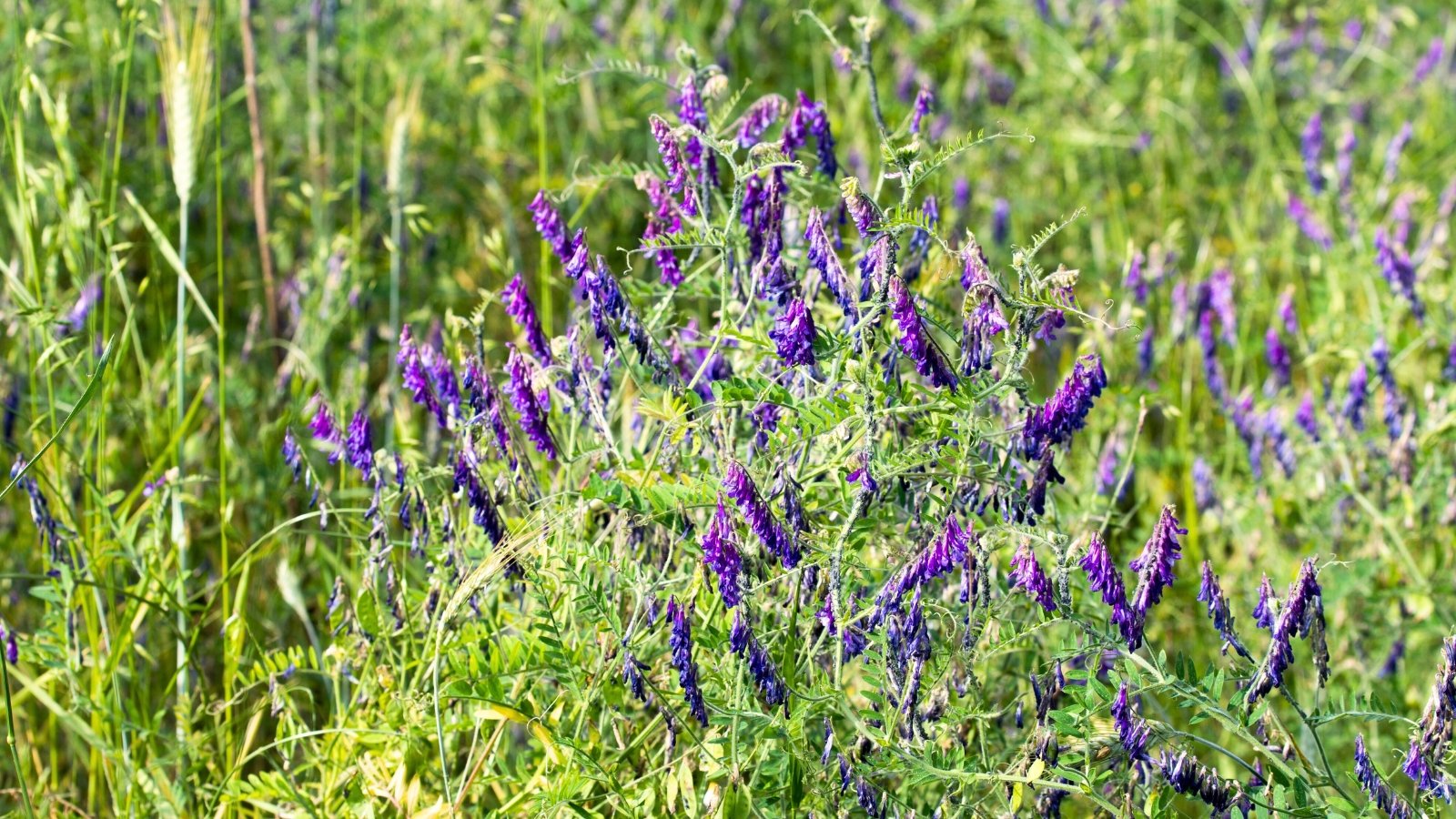
Like tarps, cover crops prevent new seeds from sprouting by covering the soil. Cool-season cover crops work well during fall and winter, and some boost nitrogen levels while they grow! Instead of synthetic tarps or plastics, try creating a living mulch with cover crops.
Use cover crops like fava beans or hairy vetch if your soil is low in nitrogen—species like these two boost nitrogen levels by partnering with bacteria that convert atmospheric nitrogen into a form plant roots can absorb.
Or, consider growing a North American native plant like lacy phacelia as a living mulch. It’s cold hardy to around 19°F (-7°C) and provides local wildlife with nectar, pollen, and habitat space. After the cold season is through, chop or crimp the crops and let them sit on top of the soil. They’ll add nutrients, humus, and structure to existing soils as they decay.
Note that some cover crops are invasive in various areas of North America. Ensure you’re in an area where the crop you’d like to grow won’t crowd out native plants before planting.
Groundcovers
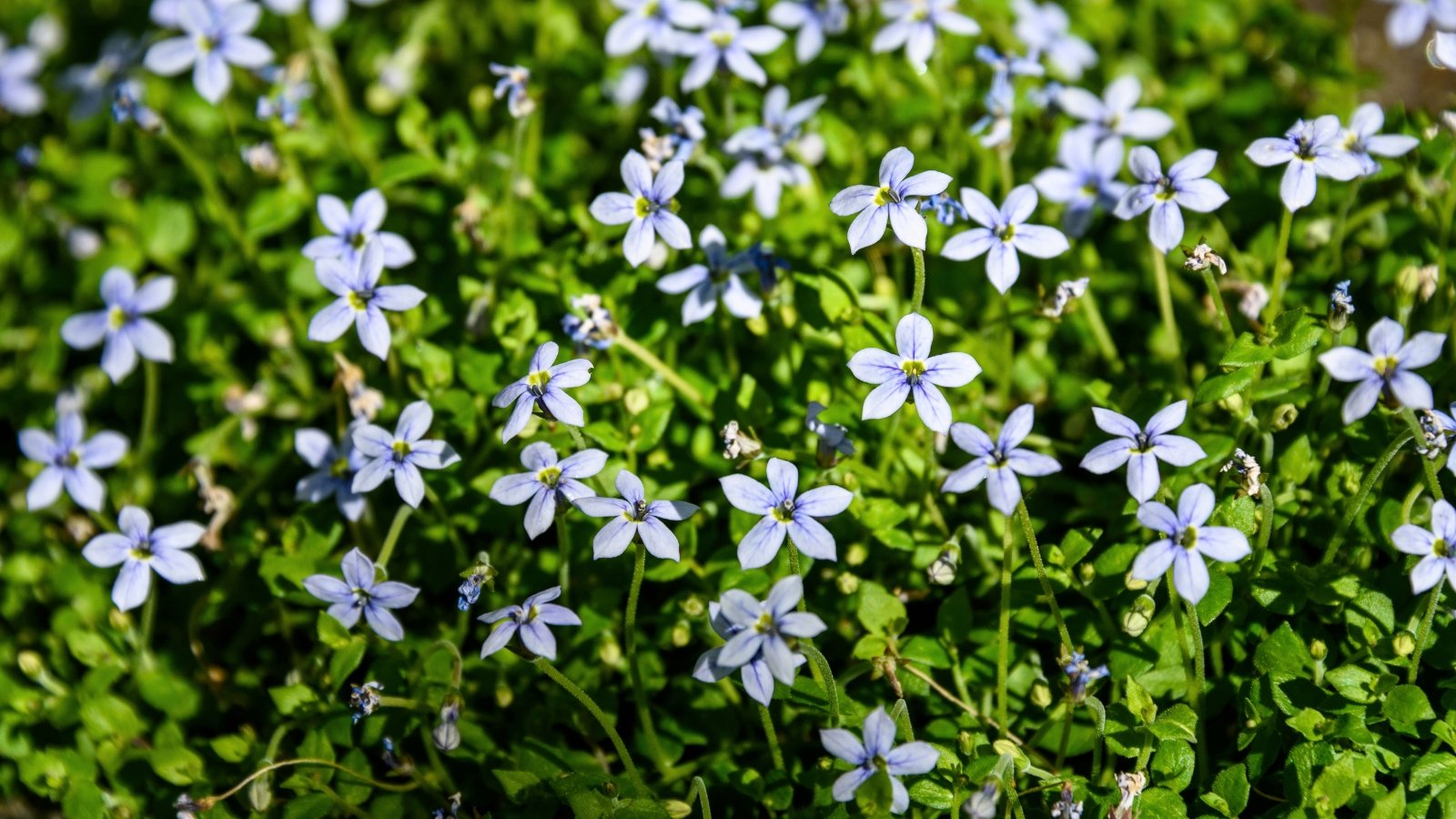
Groundcovers are similar to cover crops, except they’re perennial, and they grow larger each year. Some, like blue star creeper, can cover your entire garden! Use them in places you don’t plan on growing vegetables or fruits, and they’ll prevent seeds from sprouting, so you’ll have less weed pulling to do.
For best results, match a groundcover type with your garden’s various exposures and your local ecosystem. Grow types like creeping thyme or Kinnikinnik under full sun, and try species like bugleweed or lance selfheal in shady locations.
Avoid Tilling
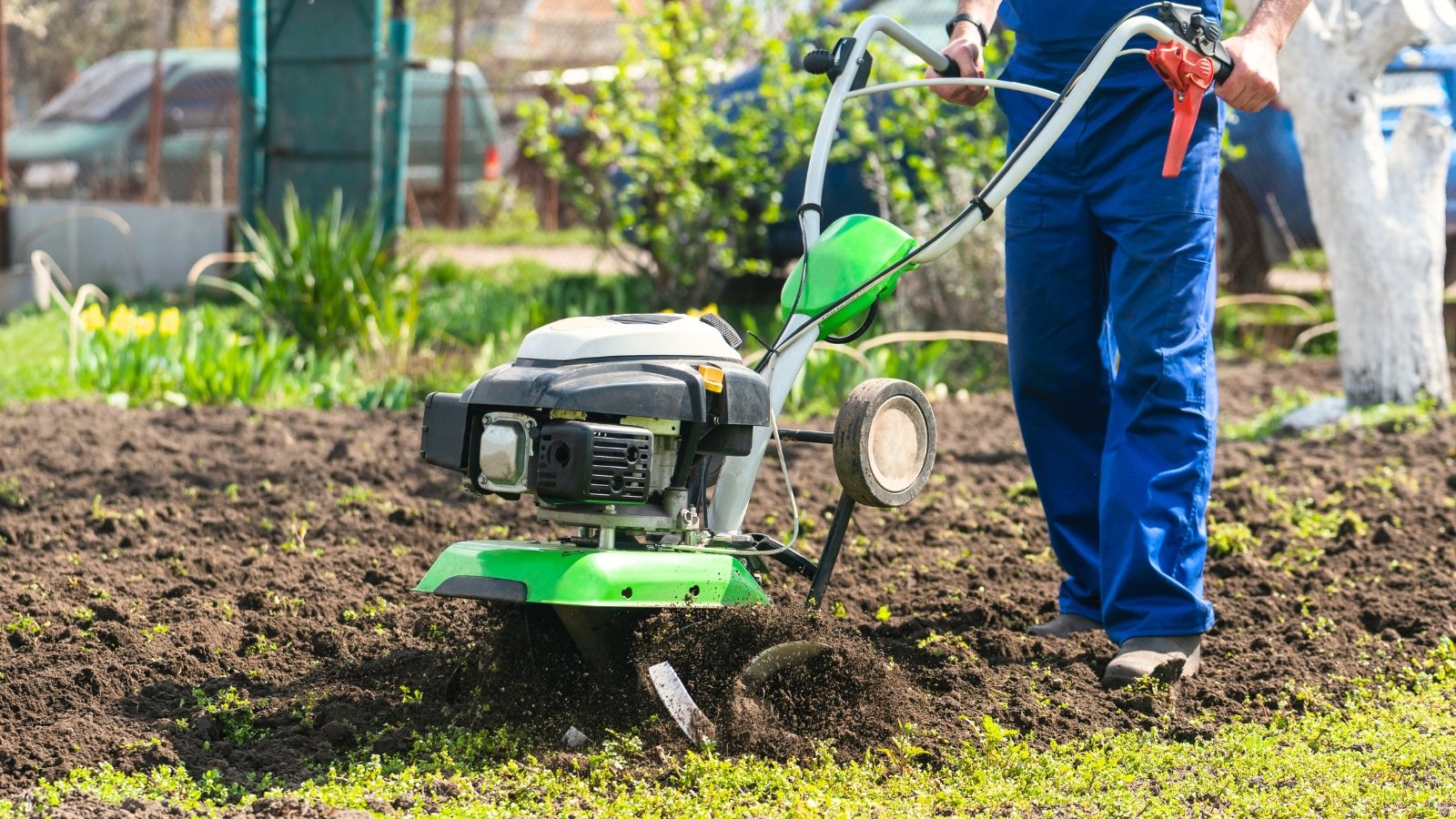
Tilling has its benefits, but it also has many drawbacks. It involves using metal blades to dig into and chop up large clumps of dirt. It’s great as a one-time solution to fix compact, hardpan soil. Repeated tilling, however, damages soil structures and encourages weeds.
Certain plants like field bindweed love tilling! They sprout from tiny root fragments, and tilling creates more pieces that mature into individual plants. Consider attempting to remove these weeds from your garden to decrease the future seed bank. Less mature plants lead to fewer seeds, which means fewer unruly seedlings sprout in the future.
If you are choosing to till this season, do so on annual plants with weak roots. They’ll mix in with soil particles, decay, and create valuable humus for future crops. Avoid tilling where free-rooting plants like mint, bindweed, or lesser buttercup are abundant to prevent spreading them further.




